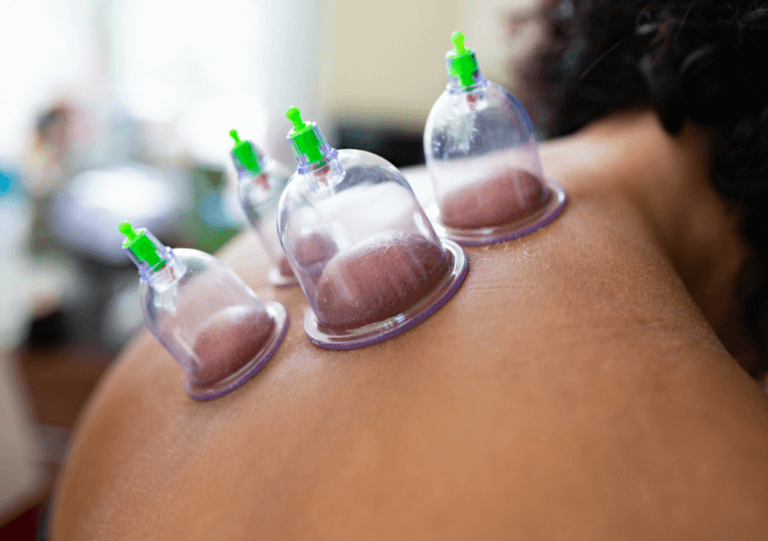By Houston Smith, DC
Cupping therapy, an ancient practice dating back thousands of years has made a resurgence particularly among athletes and wellness enthusiasts. This therapeutic technique involves placing cups on the skin to create suction, which is important for nerve mobilization, increased circulation, and decreased stress.
Historical Origins of Cupping
Historical records indicate that it was practiced in ancient Egypt as early as 1550 BCE, with hieroglyphics depicting the use of cups in medical treatments. The “Ebers Papyrus” a significant medical text from ancient Egypt, mentions cupping as a remedy for various ailments, including fever and pain.
In addition to Egypt, cupping has been documented in ancient Chinese medicine, where it is believed to have originated around 200 CE. Chinese practitioners viewed cupping as a method to balance the body’s energy, or “qi,” and improve blood circulation. Historically, cupping was used with various animal horns and applied to many parts of the body.
The practice also spread to other cultures, including the Greeks and Romans, where it was employed by notable physicians such as Hippocrates and Galen. They recognized cupping’s potential for treating respiratory conditions and musculoskeletal pain. Over time, cupping evolved and adapted to various cultural contexts, leading to the diverse methods seen today.

How We Utilize Cupping at Chiro 2 Rehab
We have helped hundreds of patients with this ancient art combined with myofascial release, and targeted rehab exercises. Our goal of treatment is to enhance blood flow to the targeted area, release any nerve endings or structures that may be stuck together, and improve the elasticity and flexibility of deep spinal structures. Nerve mobilizations and dynamic cupping methods are common in our office since we have found them to be effective for sciatica, hamstring tears, ligament injuries, hip pain, shoulder injuries, knee arthritis and many others. We believe our best outcomes are achieved when we combine adjustments, cupping, and rehab exercises that target weak and inhibited muscle groups.
In recent years, the rise of alternative approaches to Western medicine has led to a revival of cupping therapy. Athletes, including Olympians, have popularized the technique, showcasing its benefits through visible marks left on the skin after treatment. This newfound interest has spurred scientific research into the efficacy of cupping, and how it can boost circulation, improve elasticity, and balance the body.
Conclusion
The ancient art of cupping reflects a rich tapestry of historical and cultural significance. From its origins in Egypt and China to its modern resurgence in the West, cupping therapy demonstrates the evolving nature of health practices across time and geography. As research continues to explore its benefits and mechanisms, cupping remains a compelling intersection of tradition and contemporary wellness.
